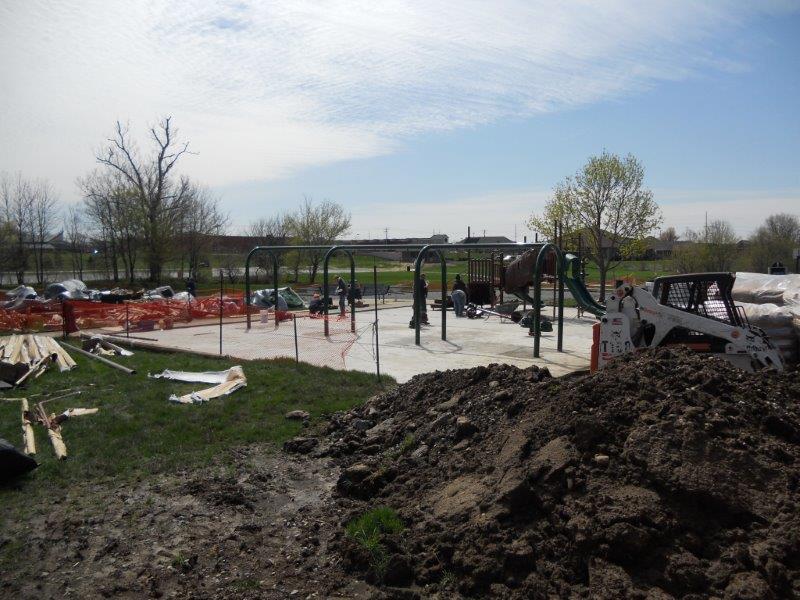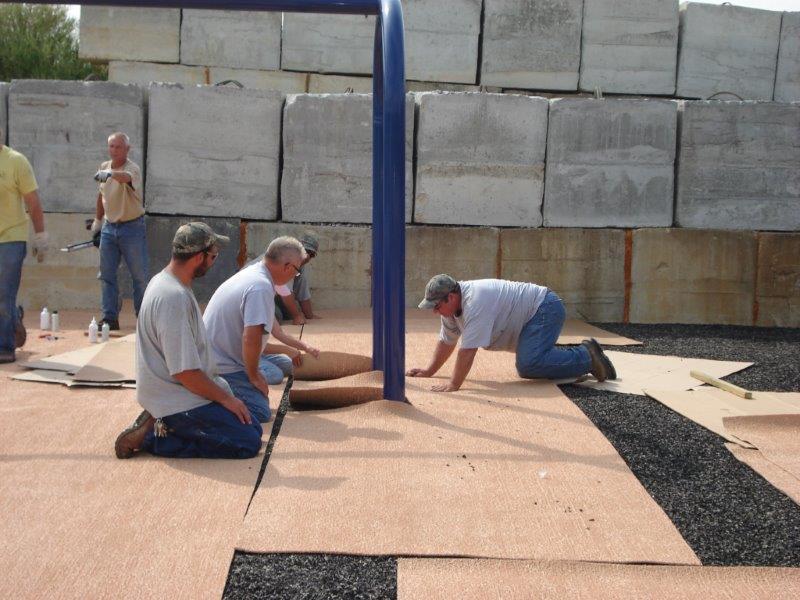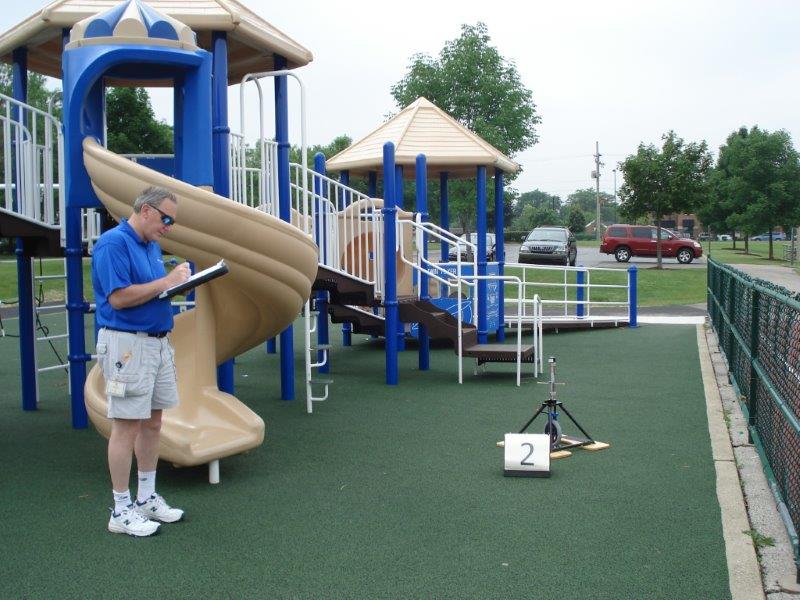Surfacing the Accessible Playground: 7 Things Every Playground Owner Should Know About the Accessibility of Their Playground Surfaces
6. Recognize that Proper Installation of Play Surface Systems is Key
An accessible surface system can be rendered useless if it is not properly installed. Installation of surface systems should be performed by individuals knowledgeable of the accessibility standards and with expertise working with the surface materials. Surface materials/systems can be installed by both contractors and the playground owner’s maintenance staff. Some manufacturers require contractors/installers to have special training and/or certification. Poured in place rubber (PIP) is almost exclusively installed by contractors specializing in the surface material. Some playground owners believe the intensive installation requirements for PIP, from mixing the binder to troweling the material level, are best completed by contractors experienced with the surface material. On the other end of the spectrum, engineered wood fiber (EWF) is most frequently installed by park maintenance crews and perceived as relatively easy compared to other surface materials. Somewhere in the middle, tile (TIL) and hybrid systems (HYB) are known to be installed by both contractors and park maintenance personnel.


There is a perception among playground owners that installation of surface systems by their own park crew will produce cost savings for the agency. However, there is a learning curve with the installation process that can prove to be challenging. During the NCA surface study, a playground owner selected a surface based on the perception it would be easy for park crews to install. The first installation was perceived as so difficult for the park maintenance crew that any cost savings was mitigated by the lengthy learning process. By the time the playground owner had installed its fourth playground with TIL, the agency had decided to transition to a different surface. On the contrary, another playground owner that contracted the installation to a preferred manufacturer’s installer was very pleased. Intensive installation may mean the contractor is the only one able to make repairs such as those due to vandalism or patches at locations where equipment may have been removed. The costs for return repairs or patches can be dependent upon whether the project is covered under the warranty.
Critical details must be communicated between the design and construction phases, regardless of whether the installation is by contractor or park/facility personnel. Site plans and construction drawings should provide details like maximum running slopes and cross slopes, beveled edges, transitions, adjoining seams and affixing the surface material to the border. Preparation of the base and sub-surfaces should be explained. Lack of attention to drainage or omission of weed barriers between layers can lead to sub-surfaces being washed away, base layers infiltrating top layers, and excessive moisture contributing to the growth of mold and vegetation. All of these issues can affect the usability, the safety and the accessibility of the playground surface. Accessibility deficiencies arising out of installation were associated with all of the surfaces in the NCA study.

Poured in Place Rubber (PIP)
Accessibility deficiencies at PIP sites were commonly found in areas where the granules from the top layer had started flaking off. This flaking condition has been linked to either inadequate ratio of bonding agent to granules when mixed on site; and/or failure of the bonding agent to properly cure when installed at 40 degrees Fahrenheit and falling. The manufacturer installation instructions show the preferred atmospheric temperature for installation to be 40 degrees Fahrenheit and rising. Left unattended over time, areas where the top granular layer has flaked away can lead to non-compliant clear ground space at play equipment such as swings, transfer systems and the egress of slides. Deficiencies related to installation methods may not become evident for months or even years. Thus, it is necessary for the playground owner to prepare for these situations prior to purchase through the terms of the warranty and/or specified funds for maintenance.
Tiles (TIL)
The NCA study identified accessibility deficiencies with TIL most often related to puncture holes ranging from .50 inches to more than 2 inches in diameter and locations where the seams had started to shift or buckle creating openings and changes in level along the accessible route. The puncture holes may be products of intentional vandalism or unintentional damage from users stepping on rocks and other foreign objects with enough force to penetrate the surface. Loose particles are also known for lodging in the TIL seams causing separation at the seams. Left unattended, the particles can lodge so deep in the seams that the adhesive can degrade and the TIL can separate from the concrete subsurface. As the product continues to age, instances of cracking have been identified where either the subsurface or structural integrity of the surface product is compromised. Because TIL are made from rubber product, the surface should continue to be monitored throughout its life cycle for its ability to meet the impact attenuation requirements of ASTM F1292.
Engineered Wood Fiber (EWF)
Sites installed with EWF were found to have the highest number of accessibility deficiencies within the first year of installation. Because EWF is a loose fill surface, it is frequently observed with accessibility deficiencies related to running slope, cross slope and change in level. EWF has been observed with undulation across the horizon of the surface area. The undulating surface material creates changes in level, running and cross slopes exceeding the maximum allowable standards resulting in non-compliant accessible routes to play components. It is critical for the manufacturer/supplier and the playground owner to communicate the process for installation. In most instances it is necessary for the loose material to be installed in layers, watered and compacted in order to achieve an accessible route and level clear ground space at equipment. Some playground owners consider the installation of EWF as an opportunity to use volunteers to assist in compaction by running drum roller teams across the surface area.
Hybrid Surface Systems (HYB)
Two of the three different types of HYB systems (outdoor carpet and artificial grass) were installed by contractors representing the manufacturers. These surface systems required installers experienced with laying the sub-surface, adjoining seams, and affixing the surface material to the border. Separation at the seams appeared to be the most prevalent concern following installation. Repairs to seams must be made by the contractor and costs are dependent upon the terms of the product warranty.

User Comments/Questions
Add Comment/Question